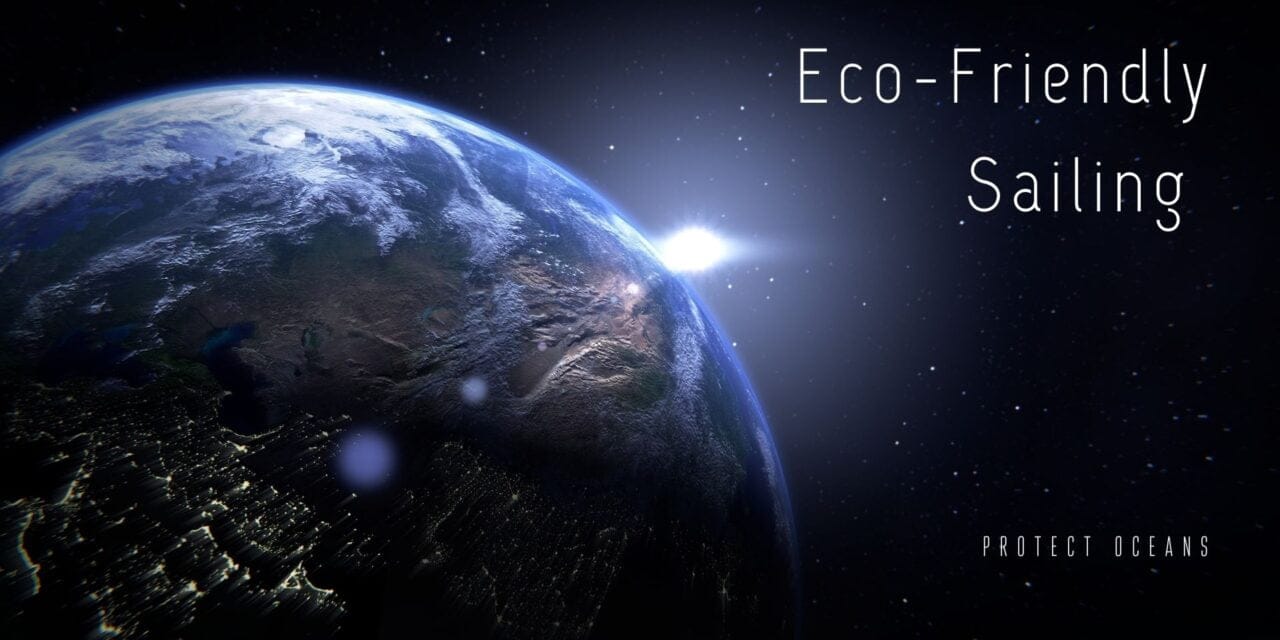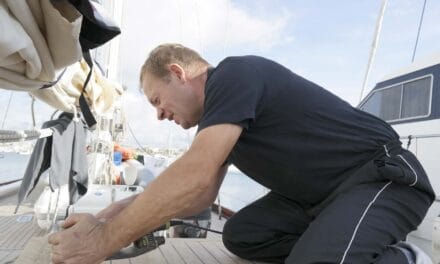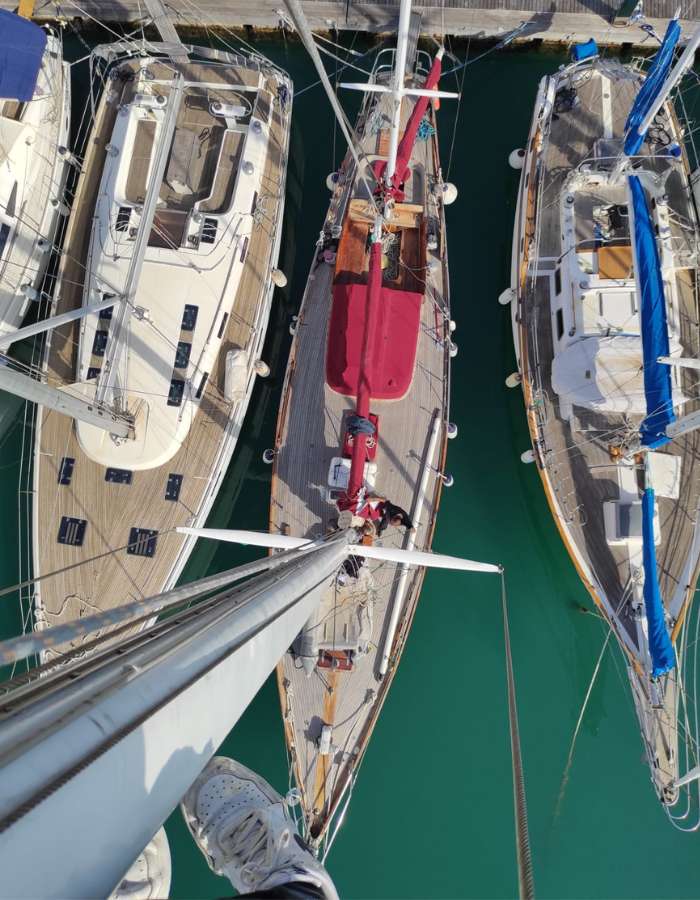Ahoy, Sailors! Navigating the Green Seas: Eco-Friendly Boating Tips
Sailing has always been a close-to-nature activity, offering a direct connection with the wind, waves, and the vast open sea. But as the world becomes more conscious of environmental issues, sailors, too, must consider their impact on the ecosystems they cherish. By adopting sustainable practices, sailors can protect marine life, reduce pollution, and help preserve the oceans for future generations. This post provides practical tips and insights on how to make your sailing experience as eco-friendly as possible.
I. Introduction
A. Importance of Sustainability in Sailing
The oceans, covering over 70% of our planet, play a crucial role in regulating the Earth’s climate and supporting biodiversity. However, they are also under threat from pollution, climate change, and overfishing. Sailing can be a low-impact way to travel and explore the seas, but it can also contribute to environmental damage if not done responsibly. From fuel emissions to invasive species, our actions on the water can have lasting consequences. Therefore, it’s essential for sailors to embrace sustainable practices to minimize their environmental footprint.
B. Overview of Eco-Friendly Practices Covered in the Post
In this post, we’ll explore various ways to make your sailing experience greener. From eco-friendly boat maintenance to renewable energy use, responsible anchoring, and even beach cleanups, this guide covers it all. Whether you’re a seasoned sailor or a weekend adventurer, these tips will help you sail sustainably, protect marine ecosystems, and contribute to cleaner, healthier oceans.
II. Eco-Friendly Boat Maintenance
A. Choosing Eco-Friendly Antifoul and Bottom Paint
One of the key areas where boat maintenance intersects with environmental protection is in the choice of antifouling paint. Traditional antifouling paints often contain toxic chemicals, such as copper and biocides, that leach into the water to prevent marine organisms from attaching to the hull. Unfortunately, these chemicals can harm marine life and disrupt ecosystems.
Eco-friendly antifoul alternatives are now available that use non-toxic ingredients, such as silicone or ceramic coatings, which create a smooth surface that organisms can’t easily attach to. Additionally, there are biocide-free paints that use physical barriers instead of chemicals to deter growth. Switching to these sustainable options reduces your boat’s environmental impact without compromising performance.
B. Properly Maintaining Your Engine
Engines are notorious for being significant sources of pollution if not properly maintained. A well-maintained engine not only performs more efficiently but also burns fuel cleaner, resulting in fewer emissions. Regularly servicing your boat’s engine, cleaning the air filters, and ensuring it’s running smoothly are all essential steps in minimizing harmful exhaust gases.
Consider switching to a four-stroke engine, which is generally more fuel-efficient and produces fewer emissions than a two-stroke engine. If possible, explore electric outboard motors, which are quieter and produce zero emissions.
C. Responsible Refueling and Managing Oil/Fuel
Refueling mishaps can lead to spills, which harm marine life and ecosystems. Always refuel responsibly by using funnels, absorbent pads, and taking extra care to avoid overfilling. Keep a spill kit on board to deal with any accidental spills quickly.
Used oil and fuel must be disposed of properly. Many marinas offer designated disposal facilities for waste oil, and it’s essential to use these services rather than dumping used fluids into the water.
III. Reducing Environmental Impact
A. Minimizing Emissions and Energy Use on Board
Energy efficiency on board can make a big difference in your environmental footprint. Start by reducing the amount of fuel you use—considering the wind is free, why not sail more often? Reducing engine use by sailing whenever conditions allow will save fuel and reduce emissions.
Additionally, monitor energy consumption by switching to energy-efficient appliances, such as LED lighting. Use power only when necessary and practice mindful energy management to conserve fuel and battery power.
B. Utilizing Renewable Energy Sources
Many sailors are now turning to renewable energy to power their boats, which is a great way to reduce reliance on fossil fuels. Solar panels and wind turbines can generate electricity to power essential onboard systems, from navigation to refrigeration, without emitting harmful gases.
Solar panels are particularly effective for sailing because they can be installed on deck or along the boat’s rails and can provide consistent power even when docked or at anchor. Wind turbines are another excellent option for generating electricity, especially when sailing long distances. By harnessing renewable energy, you reduce your reliance on fuel and ensure a cleaner journey.
C. Properly Managing Waste and Sewage
Improper waste disposal is a leading cause of marine pollution. All trash produced on board should be stored securely until it can be disposed of in designated facilities onshore. Never throw plastics or other waste overboard. Reusable containers, bags, and water bottles can drastically reduce the amount of waste generated on your vessel.
Sewage is another critical issue. Many boats are equipped with holding tanks for sewage, which should only be emptied at proper pump-out facilities to prevent raw sewage from entering the water. Avoid discharging untreated waste into the ocean, as it contributes to water pollution and can harm marine life.
IV. Protecting Marine Life and Ecosystems
A. Preventing Invasive Species
Invasive species can be easily transported by boats and introduced to new ecosystems where they may cause significant harm. These species often travel attached to the hull or in bilge water and can upset the balance of local marine environments.
To prevent the spread of invasive species, regularly clean your boat’s hull, propeller, and other underwater equipment, especially if sailing between different bodies of water. Use eco-friendly cleaning products and follow local guidelines for preventing the spread of non-native species.
B. Respecting Wildlife and Marine Life
The ocean is home to countless species of marine life, and sailors often have the privilege of observing these creatures up close. However, it’s essential to respect the animals you encounter. Avoid getting too close to marine mammals, seabirds, and other wildlife, as human interaction can disturb their natural behaviors.
If you’re sailing in an area known for sensitive habitats like coral reefs, be cautious with your navigation to avoid damaging these delicate ecosystems. Pay attention to local wildlife protection regulations, and never feed or disturb marine animals.
C. Responsible Anchoring and Fishing Practices
Anchoring can cause significant damage to seabeds, especially in coral reef or seagrass areas. Always try to anchor in sandy or muddy bottoms where the impact on ecosystems is minimal. If possible, use mooring buoys, which are often provided in protected areas, as they prevent anchor damage to the seabed.
Fishing is another activity that can have environmental consequences if not done sustainably. Follow local fishing regulations and use appropriate gear to avoid harming unintended species. Practice catch-and-release when possible, and never fish in protected marine areas.
V. Sustainable Sailing Practices
A. Sail as Much as Possible, Use Oars for Dinghy
One of the simplest ways to sail sustainably is to rely on wind power as much as possible. The beauty of sailing lies in its reliance on natural forces—so let the wind do the work! Reduce your engine use by sailing instead of motoring, even when the winds are light. This not only saves fuel but also offers a more peaceful experience on the water.
For short trips in your dinghy, consider using oars instead of a motor. Rowing is a quiet, zero-emission alternative that allows you to explore the waters without leaving any environmental trace.
B. Cleaning Up Beaches and the Sea
Sailors have a unique opportunity to make a direct impact by participating in beach cleanups and removing debris from the ocean. Whether you’re anchored in a pristine bay or visiting a popular marina, take some time to collect any trash you find along the shore or floating in the water. Every piece of litter you remove helps protect marine life and keep the oceans clean.
C. Using Eco-Friendly Cleaning Products and Cosmetics
Many conventional cleaning products contain harsh chemicals that can pollute the water when washed overboard. Opt for eco-friendly, biodegradable products designed for marine environments. These products break down quickly and are less harmful to marine life.
Similarly, when choosing personal care products like sunscreen, shampoo, or soap, look for reef-safe and biodegradable options. Sunscreens that contain oxybenzone and octinoxate are particularly harmful to coral reefs, so make sure to avoid these chemicals.
VI. Educating and Influencing Others
A. Sharing Knowledge with Fellow Sailors
Sustainability is a collective effort, and sailors can play a vital role in spreading eco-friendly practices within the sailing community. Share your knowledge and experiences with other sailors—whether it’s at a marina, a sailing club, or on social media. The more people who understand the importance of protecting our oceans, the greater the impact we can have.
B. Encouraging Sustainable Boating Habits
Lead by example and encourage others to adopt sustainable boating habits. Whether it’s using renewable energy sources, reducing waste, or practicing responsible anchoring, showing others the benefits of eco-friendly sailing can inspire change. Small actions, when multiplied across the sailing community, can lead to significant improvements in the health of our oceans.
VII. Conclusion
A. Recap of Key Eco-Friendly Sailing Tips
From eco-friendly boat maintenance and reducing emissions to protecting marine life and promoting sustainability, the path to greener sailing involves a series of conscious decisions. These tips cover essential areas such as choosing non-toxic antifouling paint, using renewable energy, minimizing waste, respecting wildlife, and adopting sustainable sailing practices like sailing more and using oars instead of engines.
B. Call to Action for Readers to Adopt Sustainable Practices
The oceans are a precious resource that require our protection. By adopting eco-friendly practices, sailors can ensure that the seas remain vibrant and healthy for future generations. So, as you prepare for your next adventure, remember to sail responsibly, reduce your environmental impact, and inspire others to do the same. The future of our oceans depends
on the choices we make today—so let’s make them count. Safe sailing!
FAQs about eco-friendly sailing
Is it greener to anchor or moor to a buoy?
Mooring to a buoy is generally the more eco-friendly option compared to anchoring. When you drop an anchor, it can damage sensitive underwater habitats like coral reefs, seagrass beds, and other ecosystems. Anchors and their chains can scrape the ocean floor, disturbing marine life and leading to habitat degradation.
Mooring buoys, on the other hand, are fixed to the seabed in a way that causes minimal environmental disturbance. They allow boats to stay in place without the need to drop an anchor, reducing the impact on the seafloor. Many protected marine areas provide mooring buoys to encourage eco-friendly anchoring, so it’s always a good idea to use them when available.
Where should I discharge the boat’s waste holding tank?
Waste holding tanks should only be discharged at designated pump-out facilities provided by marinas or harbor authorities. Dumping untreated sewage into the ocean or near coastal areas can lead to serious environmental harm, including water pollution, oxygen depletion, and the spread of pathogens that endanger marine life and human health.
Many coastal regions and countries have strict regulations regarding sewage discharge, especially in sensitive or protected marine areas. Always check local laws before discharging your holding tank and make use of pump-out stations to dispose of waste in an environmentally responsible manner.
Are there any eco-friendly alternatives to traditional antifouling paint?
Yes, there are several eco-friendly alternatives to traditional antifouling paints, which often contain harmful chemicals like copper and biocides that leach into the water and harm marine life. Some greener options include:
Silicone-based coatings: These create a slick surface that makes it difficult for organisms to attach to the hull. Ceramic coatings: These are durable and non-toxic, providing a physical barrier against fouling. Biocide-free paints: These rely on non-toxic methods, like a smooth surface or specialized textures, to prevent the growth of marine organisms.
These alternatives are becoming more widely available and offer an effective way to maintain your boat without damaging marine ecosystems.
How can I minimize fuel consumption while sailing?
Minimizing fuel consumption not only reduces your carbon footprint but also saves money. Here are some strategies:
Sail as much as possible: The best way to reduce fuel use is to let the wind power your journey. Try to avoid using your engine when wind conditions are favorable. Use a fuel-efficient engine: If you rely on your engine, ensure it’s well-maintained and fuel-efficient. Consider switching to an electric or hybrid engine for even greater savings on emissions. Optimize your sailing routes: Plan your trips based on wind conditions and currents to maximize efficiency and reduce the need for engine power.
What can I do to prevent the spread of invasive species while sailing?
Invasive species often hitch rides on boats, either attached to the hull or transported in bilge water, ballast tanks, or even on your anchor. To prevent their spread, you can take the following precautions:
Clean your hull regularly: Remove any organisms or debris that accumulate on the hull before moving between different bodies of water. Empty bilge water responsibly: If you’re sailing between different ecosystems, ensure that bilge water is emptied in the same region it was taken from or treated before discharge. Follow local guidelines: Many regions have specific guidelines for preventing the spread of invasive species, so always check local regulations and follow best practices.
What are the best renewable energy sources for sailboats?
Solar panels and wind turbines are the two most common renewable energy sources for sailboats:
Solar panels: These are easy to install and can be placed on decks, biminis, or along rails to generate electricity for onboard systems. They work best in sunny conditions, but even on overcast days, they can generate a modest amount of power. Wind turbines: Ideal for offshore sailing, wind turbines can harness wind energy to charge batteries and power essential systems. They are particularly effective when you’re underway in windy conditions.
Both options help reduce reliance on fuel and contribute to a greener, quieter sailing experience.
Can I use regular household cleaning products on my boat?
No, many household cleaning products contain chemicals that are harmful to marine environments. When used on boats, these products often end up in the water, where they can damage ecosystems. It’s better to use eco-friendly, biodegradable cleaning products that are specifically designed for marine use.
Look for products labeled as non-toxic and biodegradable, ensuring they break down quickly and do not harm marine life. Additionally, you can make your own natural cleaning solutions using ingredients like vinegar, baking soda, and lemon, which are both effective and safe for the environment.
How can I reduce plastic waste on my boat?
Reducing plastic waste on your boat is an important step in minimizing your environmental impact. Here are some ways to reduce plastic waste:
Use reusable water bottles: Instead of single-use plastic bottles, opt for reusable ones that you can refill from a water filtration system or from larger containers. Store food in reusable containers: Replace disposable plastic bags and containers with reusable alternatives made of stainless steel or silicone. Avoid plastic packaging: When provisioning your boat, try to buy in bulk and bring your own reusable bags to cut down on plastic packaging. Participate in beach cleanups: Take it a step further by organizing or participating in cleanups whenever you dock near a beach. It’s a great way to give back and help remove plastic waste from the marine environment.
Are there specific regulations for eco-friendly sailing in marine protected areas (MPAs)?
Yes, many marine protected areas (MPAs) have strict regulations designed to preserve sensitive ecosystems. These may include restrictions on anchoring, fishing, and waste disposal. In some cases, engine use may also be limited to reduce noise pollution and protect marine life.
When sailing in or near an MPA, always familiarize yourself with the rules and regulations to ensure you’re complying with local laws. This not only helps protect the environment but also ensures you don’t face fines or penalties for accidental violations.
What personal care products are safe for the ocean?
Many conventional personal care products contain ingredients harmful to marine life, particularly coral reefs. For example, sunscreens that contain oxybenzone and octinoxate can cause coral bleaching and are banned in certain areas.
Instead, opt for reef-safe sunscreens that use physical blockers like zinc oxide or titanium dioxide, which are non-toxic to marine life. Also, choose biodegradable soaps, shampoos, and toothpaste to minimize the impact of wastewater discharge on the environment. These products break down more easily and don’t harm aquatic organisms.









